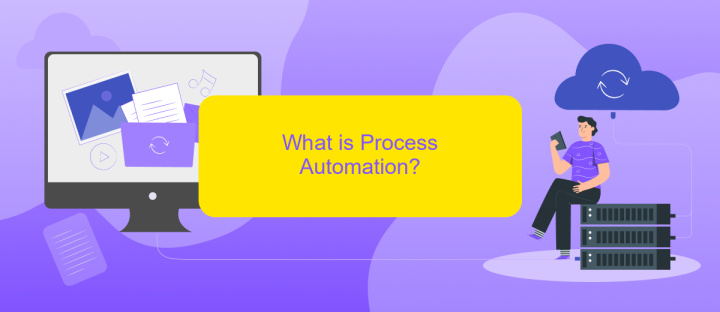Difference Between Workflow Automation and Process Automation
Understanding the distinction between workflow automation and process automation is crucial for optimizing business operations. While both aim to enhance efficiency and reduce manual labor, they serve different purposes and are implemented in unique ways. This article will explore the key differences, benefits, and use cases of each, helping you make informed decisions for your organization's automation strategy.
Introduction
In today's fast-paced business environment, efficiency and productivity are paramount. Companies are increasingly turning to automation to streamline their operations. However, there's often confusion between workflow automation and process automation, two concepts that, while related, serve different purposes and offer distinct benefits.
- Workflow automation focuses on automating specific tasks within a sequence of activities.
- Process automation aims to automate entire business processes from start to finish.
- Both types of automation can significantly improve operational efficiency and reduce human error.
Understanding the difference between these two types of automation is crucial for making informed decisions about which tools and strategies to implement. For instance, services like ApiX-Drive can help businesses integrate various applications and automate workflows seamlessly, ensuring that data flows smoothly across different platforms. This can be particularly beneficial for companies looking to optimize both their workflows and overall business processes.
What is Workflow Automation?

Workflow automation involves the use of technology to streamline and automate a series of tasks within a business process. By defining a sequence of steps and using software to execute them automatically, organizations can reduce manual effort, minimize errors, and improve overall efficiency. This approach is particularly useful for repetitive tasks that follow a predictable pattern, such as employee onboarding, invoice processing, or customer support ticket management.
One of the key benefits of workflow automation is its ability to integrate various tools and platforms seamlessly. Services like ApiX-Drive facilitate these integrations by allowing different software applications to communicate with each other, ensuring data flows smoothly between systems. This not only saves time but also enhances data accuracy and consistency across the organization. By leveraging workflow automation, businesses can focus on more strategic activities, driving growth and innovation.
What is Process Automation?

Process automation refers to the use of technology to perform recurring tasks or processes in a business where manual effort can be replaced. It aims to streamline workflows, increase efficiency, and reduce human error. By automating processes, businesses can ensure that operations run smoothly and consistently, freeing up employees to focus on more strategic activities.
- Identify repetitive tasks: Determine which tasks are performed regularly and can be automated.
- Select the right tools: Choose software and platforms that can effectively automate these tasks.
- Implement and integrate: Set up the automation tools and integrate them with existing systems.
- Monitor and optimize: Continuously monitor the automated processes and make necessary adjustments to improve efficiency.
One such tool that facilitates process automation is ApiX-Drive. This service allows businesses to easily integrate various applications and automate data transfers between them. By using ApiX-Drive, companies can save time and reduce the risk of errors associated with manual data entry. Overall, process automation can significantly enhance business operations and contribute to achieving organizational goals more effectively.
Comparison Table

Workflow automation and process automation are often used interchangeably, but they have distinct differences. Workflow automation focuses on automating specific tasks within a workflow, while process automation aims to streamline entire business processes for increased efficiency.
Workflow automation is typically used for repetitive tasks that follow a set sequence. On the other hand, process automation encompasses a broader scope, integrating various functions and departments to optimize the entire process flow.
- Scope: Workflow automation targets specific tasks; process automation covers entire processes.
- Flexibility: Workflow automation is more flexible and easier to implement; process automation requires more planning and resources.
- Integration: Workflow automation often requires fewer integrations; process automation may need comprehensive integration tools like ApiX-Drive.
- Complexity: Workflow automation is generally less complex; process automation is more complex and involves multiple systems.
Understanding these differences can help businesses choose the right automation strategy. Whether you need to automate individual tasks or entire processes, selecting the appropriate tools and planning accordingly is crucial for success.
- Automate the work of an online store or landing
- Empower through integration
- Don't spend money on programmers and integrators
- Save time by automating routine tasks
Conclusion
In conclusion, while both workflow automation and process automation aim to enhance efficiency and reduce manual efforts, they serve distinct purposes within an organization. Workflow automation focuses on streamlining specific tasks and activities, ensuring they are executed in a consistent and timely manner. On the other hand, process automation encompasses a broader scope, optimizing entire processes and often integrating multiple workflows to achieve end-to-end automation.
Understanding the differences between these two approaches allows businesses to implement the right strategies for their unique needs. Tools like ApiX-Drive can play a crucial role in this process by facilitating seamless integration between various systems and applications, thereby maximizing the benefits of both workflow and process automation. By leveraging such services, organizations can achieve greater operational efficiency, improved accuracy, and a significant reduction in the time required to complete complex processes.
FAQ
What is the primary difference between workflow automation and process automation?
Can workflow automation and process automation be used together?
What are some common use cases for workflow automation?
What are the benefits of implementing process automation in a business?
How can businesses get started with workflow and process automation?
Apix-Drive is a simple and efficient system connector that will help you automate routine tasks and optimize business processes. You can save time and money, direct these resources to more important purposes. Test ApiX-Drive and make sure that this tool will relieve your employees and after 5 minutes of settings your business will start working faster.


